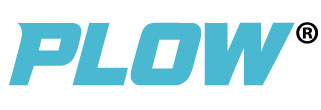I think it’s safe to say that if most contractors told an employee to drive their salt truck to apply bulk rock salt at 92 pounds per acre, they would be told it can’t be done. With salt brine it can. If you look at the chart provided, at 40 gallons per acre at 23.3% salt brine, you are applying 92 pounds of salt to that acre. I would say it’s extremely difficult to apply any- thing less than 250 pounds per acre without driving at unsafe speeds in a lot with a conventional bulk spreader. Additionally, as you are pretreating with liquid, it seeps into the cracks. Much like spraying Pam in a frying pan before frying an egg, it prevents snow and ice from sticking. This makes for cleaner plowing and as the season goes on you can effectively lower your application rates, depending on the event and weather of course.
As with any product or service, there are advantages and disadvantages among options. I would like to start with one huge advantage: Have any of your customers ever told you they want to be first? I recently spoke at the Snow and Ice Management Association (SIMA) symposium and I think just about everyone in the room raised their hand. Liquids give you the ability to make every customer first. If you pretreat all your sites before the first flakes even start to fall, you have effectively been able to service every customer first, before the snow event.
Additionally, if the snowfall forecast doesn’t pan out, you are able to invoice for a service that will be used on the next snow event. If it’s a seasonal contract, the pre- treatment is already down for the next time it snows. And, unlike salt, you don’t have to worry about it being tracked off the site, the customer sweeping it up, or asking you to clean it up. It also gives you extra capacity in case a bulk salt spreader breaks. You now have another tool that can actually de-ice or anti-ice a parking lot.

I can’t think of many disadvantages of using liquids; however, they do not work in freezing rain since the product is already diluted in water. That would be the only time I would probably tell you not to use it or that you can’t use it. All other times, at least in the Chicago area market, it can be used with the field goal approach. As stated before, the field goal approach is simple. The colder it is, the further the client from a depot, or the shorter the amount of time to complete the cycle in a route, the less likely the chance of success.
With salt brine, which is the majority of the liquid product we use, there are a few key items you must know. First, know your pavement temperatures. Just like rock salt, salt brine is most effective at 20 ̊ F and above. When doing direct liquid applications, this is a more critical temperature to know than air temperature. Second, you do still need to know the air temperature. This is mostly so you know when to flush the lines on your application equipment or mix calcium or magnesium in with your brine to prevent any freezing of the liquid. It will also achieve better melting results as pavement and air temperatures drop.
Finally, you need to know the salinity of your salt brine—which should always be 23.3% or very close—and what the eutectic temperature is. Eutectic temperature simply takes into consideration the percentage of salinity you have, and gives you the lowest possible temperature that the mixture will freeze. (See Eutectic Temperatures graphic.) The eutectic temperature of 23.3% salt brine is -6 ̊F. This means a 23.3% salt brine won’t freeze in tanks as long as temperatures stay above -6 ̊F.
 Langton is vice president of Langton Group in Woodstock, IL. He co-founded the company with his brother, Joe, in 2005. Together they’ve brought cutting edge technologies and methodologies to Langton Group—from championing robotic mowing to the most advanced snow removal strategies and weather tracking techniques.
Langton is vice president of Langton Group in Woodstock, IL. He co-founded the company with his brother, Joe, in 2005. Together they’ve brought cutting edge technologies and methodologies to Langton Group—from championing robotic mowing to the most advanced snow removal strategies and weather tracking techniques.
Do you have a comment? Share your thoughts in the Comments section below, or send an e-mail to the Editor at cmenapace@groupc.com.











![[VIDEO] Dickies®: Discover Workwear That’s Anything But Uniform](https://turfmagazine.com/wp-content/uploads/2023/06/1647663814-4b1a2a7742790a9b1e97a3b963477850192e1d6a9dfba9b07214a77bae25d6e3-d-218x150.jpg)




























![[VIDEO] Dickies®: Discover Workwear That’s Anything But Uniform](https://turfmagazine.com/wp-content/uploads/2023/06/1647663814-4b1a2a7742790a9b1e97a3b963477850192e1d6a9dfba9b07214a77bae25d6e3-d-324x160.jpg)